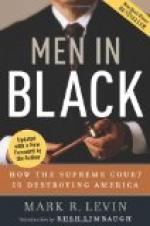At the end of the defendant’s case, when both sides have rested, the defendant again moves to dismiss. Here again it is a formal motion, which he may not altogether mean, but which the lawyer often makes as a matter of form. If the judge really believes there is not enough evidence to let the case go to the jury, he ought to say so without the necessity of a motion. Suppose there is not, he dismisses the case “on the merits” and the trial is over. But suppose there is and the judge does not know his business and the fine point of law is not entirely clear to his Honor, and he makes a mistake and the case is dismissed. The result is that although he has granted the motion of the defendant to dismiss and given the defendant what he wanted, he has in reality penalized him, for the appellate court will reverse his decision and the defendant have to pay all costs and stand the expense of a new trial. The judge is in a quandary, which he may get out of in two ways. One is to let the weak case of the plaintiff go to the jury with the hope that they will see what a poor showing the plaintiff has made and find a verdict for the defendant, in which event he will be safe. But if the jury should make a mistake and find for the plaintiff, then the judge has the intention of setting that verdict aside, nullifying all the work of the jury, the witnesses, the clients, and the lawyers, and ordering a new trial. This is rather a weak-minded proceeding and shows the necessity of having a man in the referee’s chair who knows how to decide.
The second alternative for the judge is to reserve decision on the motion and to let the jury go into the jury-room and worry about the verdict for an hour or two, while the judge has the hidden intention of perhaps deciding that they need not spend any time at all about the matter.
The principle on which the judge passes on this motion to dismiss is, that after all the case is in and all proof had, that on the proof and evidence there is not enough on the part of the plaintiff from which any reasonable man could ever find a verdict for him. The motion differs from the one at the close of the plaintiff’s case in that the latter is based on there being no proof at all, while the one after the case is entirely in is based on the theory that there is no possibility of a verdict.
This sounds again like a metaphysical discussion, but is illustrative of the futility of formal motions, so that actually the decision depends upon the good plain common sense of the judge. The tendency is that if the case has gone to the length of a full trial and there is any question of fact involved, that the jury should determine the question of fact and exercise their functions. It must be a poor weak case of the plaintiff and evidently unsound, in which the judge or the appellate court interferes.
Throughout the trial the little motions that occur bear the same relation to the main issue as do the objections and exceptions.




